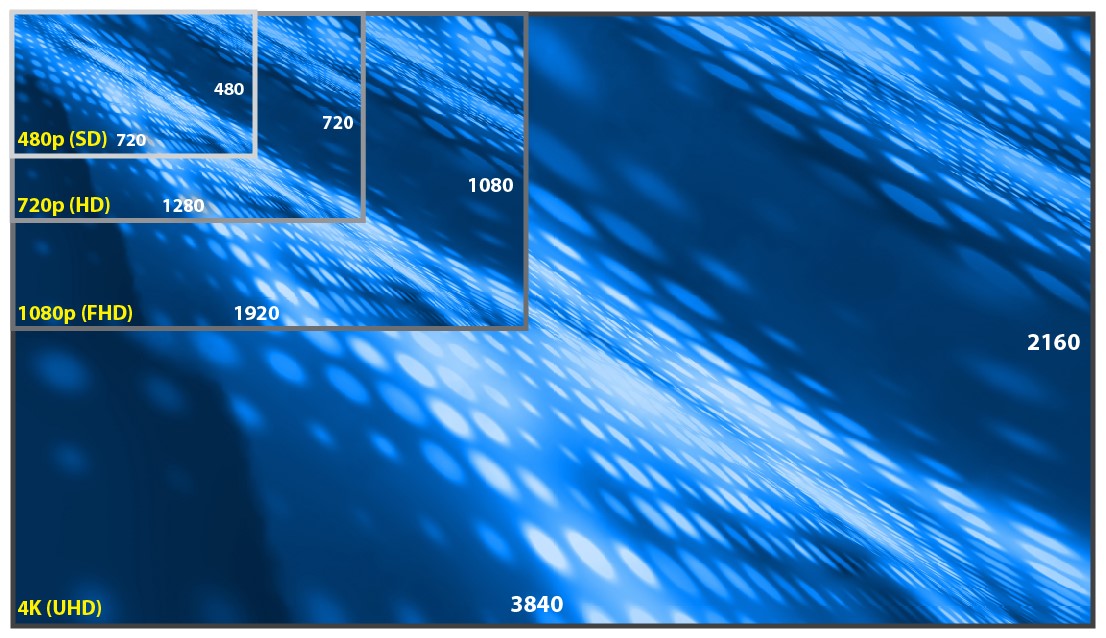Performing a quick web search brings up pages of headlines about the growth of 4K and HDR (high dynamic range) displays. Over 50% of the 38 million televisions sold in the US so far in 2017 are 4K UHD TVs – a trend that has been steady for the past two years. Phone and tablet screens have provided 1080p (1920x1080) or greater resolutions for many years now and HDR is becoming standard in higher-end products. Regardless of format, support for HDR is the current theme.
This raises the question: where is the content for 4K and HDR displays? The answer is it’s hard to find.
Content in 1080p, also known as Full HD (FHD), is often available only with premium subscriptions or limited to specific streams. 4K and HDR content is even rarer. The reason is simple economics. High-resolution content is expensive to provide. And consumers have been unwilling to pay enough of a premium to make the ROI of providing it worthwhile for content providers.
The ROI Challenge of 4K & HDR Video for Content Providers
Data centers face the major challenge of keeping up with the increasing processing requirements as picture resolution continues to grow. Let’s take a simplified use case of migrating from 720p to 1080p FHD content:
- 720p = 1280x720 = 921,600 pixels
- 1080p = 1920x1080 = 2,073,600 pixels
As you can see, going from 720p to 1080p requires processing, storing and transmitting 225% more pixels. Upgrading to 4K UHD (3840x2160 or 8,294,400 pixels) is an even more daunting 400% increase over 1080p!

Next consider HDR. While there is 8-bit HDR, consumers want the latest 10-bit HDR technology. Moving from the current 8-bit standards double the required bits. This is because, given the way the YUV domain represents pixels, an 8-bit color depth is equivalent to 24 actual bits while 10-bit equals 30 bits (a 125% increase). However, since computers are not good at processing data sizes that are not directly powers of 2, the data movement increases by 200% (from 8-bit to 16-bit) and processing overhead increases significantly to deliver 10-bit HDR.
Augmented and virtual reality (AR/VR) are huge emerging markets representing even greater challenges. While most consumers may only have stereoscopic 720p or 1080p displays, the content is being transcoded from 3k x 3k (9MP), 4k x 4k (16MP), and even up to 24MP today. Service providers will only be able to economically support real-time streaming of AR/VR content with hardware acceleration for the foreseeable future.
Ever-increasing pixel resolution is therefore a major ROI challenge for video content providers. Companies are racing to profitably offer the high-quality video streaming services consumers want.
But this challenge is also an opportunity. Data centers can differentiate themselves by reducing the cost of providing high-resolution video, thus solving the ROI problem holding back 4K and HDR content. We designed our new Media Cloud solution with exactly this opportunity for data centers in mind.
The Socionext Media Cloud Coming to the Rescue
Socionext’s flagship Media Cloud solution solves the ROI challenge of delivering high-quality video streaming by providing vast speed improvements when processing large volumes of data. Best of all, it does so at very low power, typically needing only 6.3W (including memory) to encode 4Kp60 video. The solution enables real-time transcoding and supports adaptive bitrate (ABR) processing for live streaming.
The Media Cloud is the right solution to solve the ROI challenge of high-quality streaming video. It streamlines video processing by handling multiple formats and reduces the cost of implementation and operation.
Now is the perfect time to contact us to learn more!
Read Video in the Cloud Blog Series 2: Delivering Cost-Effective Live Streaming


Leave a Reply